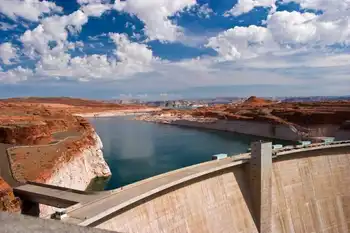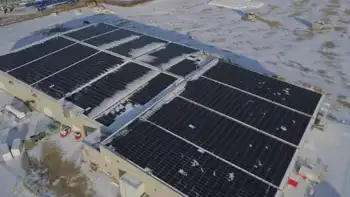DOE Seeks Public-Private Partnerships to Demonstrate 'One-Step Licensing' of New U.S. Nuclear Power Plants
WASHINGTON - U.S. Secretary of Energy Spencer Abraham announced today that the Department of Energy (DOE) is moving ahead with the next major phase of the Nuclear Power 2010 program, seeking formal applications from nuclear generating companies to partner with the department on licensing activities that would enable a new nuclear plant to be ordered and licensed for deployment early in the decade. The activities include preparation and submittal of combined construction and operating (or "one-step") license application to the Nuclear Regulatory Commission (NRC) and certification of advanced, Generation III(plus) nuclear plant designs.
"Nuclear power is clean energy and we want to expand its use in the U.S.," Secretary Abraham said. "It accounts for 20 percent of America's energy needs. This phase of the program could lead to licensing and construction of the first new nuclear plant in this country since the 1970s."
Expansion of nuclear power in the U.S. is a key recommendation of the National Energy Policy in order to meet growing demand for electricity while reducing greenhouse gas and other air emissions. Additional nuclear power will also help reduce the need for valuable domestic natural gas resources where scarcity has resulted in a doubling of prices over the last few years.
Under the Nuclear Power 2010 initiative, DOE matches industry investments over the next several years to demonstrate the key regulatory processes designed to make new plants more efficient, effective and predictable. The program is currently working with three U.S. utilities to obtain permits for sites at which new plants could be built. For this latest phase of the initiative, DOE is seeking proposals from teams led by U.S. power generating companies to develop and implement plans to license and build new plants. Proposals will be evaluated on a first-come, first-serve basis.
Copies of the solicitation number DE-PS07-04ID14435, can be obtained from the department's Interactive Procurement web site, http://e-center.doe.gov.
The "one step" licensing process, established by Congress in the Energy Policy Act of 1992 allows applicants of new nuclear plants to obtain a combined license to construct and operate the plant contingent on meeting pre-established NRC requirements. The old licensing regime required separate licensing processes for construction and operation-an approach that led to unnecessary and expensive delays that cost ratepayers billions of dollars. The new process allows for timely public access to relevant information, thorough NRC review and resolution of all issues related to plant design and operation, and approval to proceed with construction and operation of a new plant.
New Generation III(plus) designs considered for this solicitation have the advantage of combining technology familiar to operators of current plants with vastly improved safety features and significant simplification is expected to result in lower and more predictable construction and operating costs. While the evolution of nuclear power generation continues, the last successful order for a nuclear power plant was in 1973.
"These Generation III(plus) designs will bring the nuclear power industry to the forefront of technological evolution" Secretary Abraham said.
Additional information on the Department of Energy's Nuclear Power 2010 program and other nuclear energy programs may be found on the nuclear energy web site,
http://www.usnewswire.com
CONTACT: Joe Davis, 202-586-4940 or Hope Williams, 202-586-5806;
both of the Energy Department
Related News

As Maine debates 145-mile electric line, energy giant with billions at stake is absent
BANGOR - As Maine regulators are deciding whether to approve the construction of a $1 billion transmission line across much of western Maine, the Canadian hydroelectric utility poised to make billions of dollars from the project has been absent from the process.
This has left both opponents and supporters of the line arguing about how much available energy the utility has to send through a completed line, and whether that energy will help fulfill the mission of the project: fighting climate change.
And while the utility has avoided making its case before regulators, which requires submitting to cross-examination and discovery, it has…




